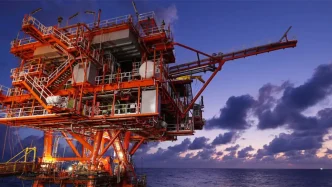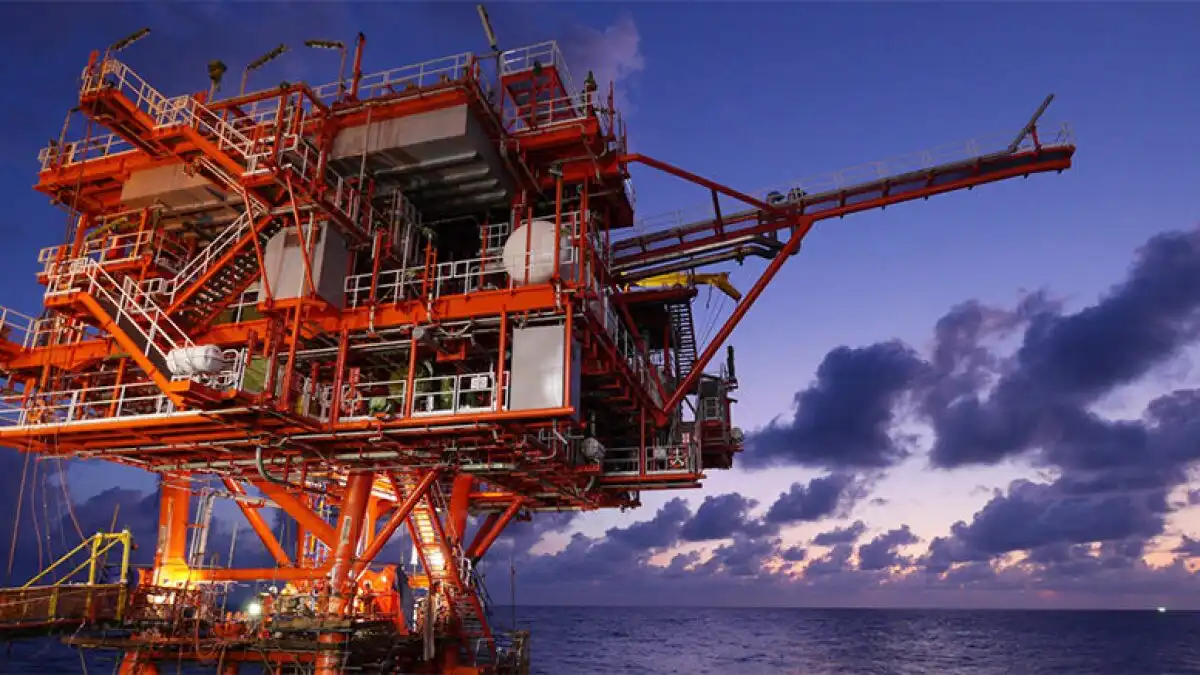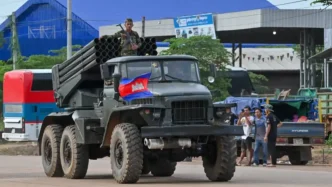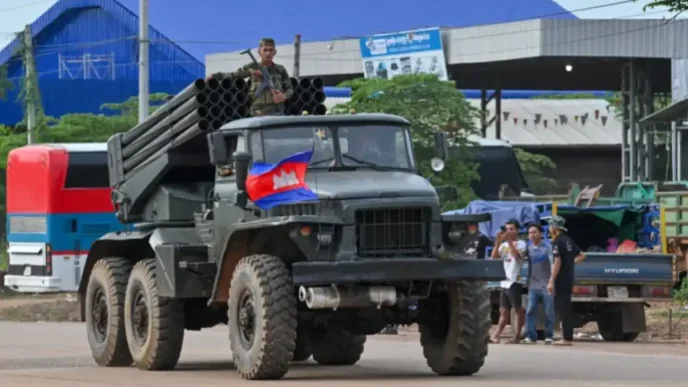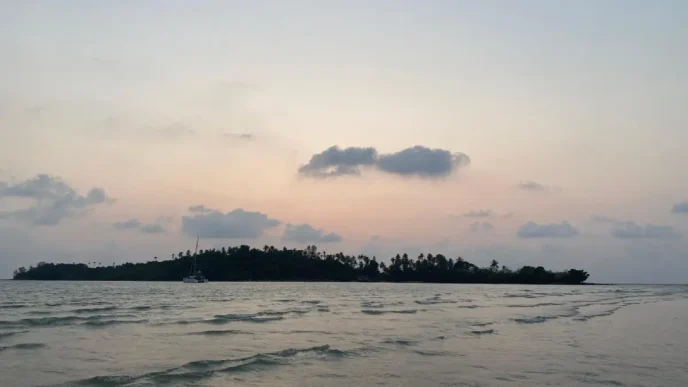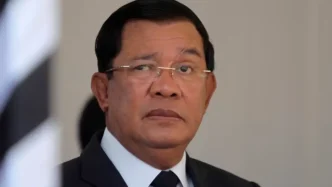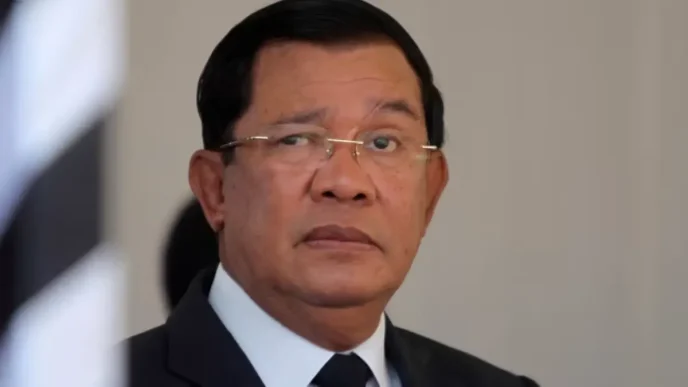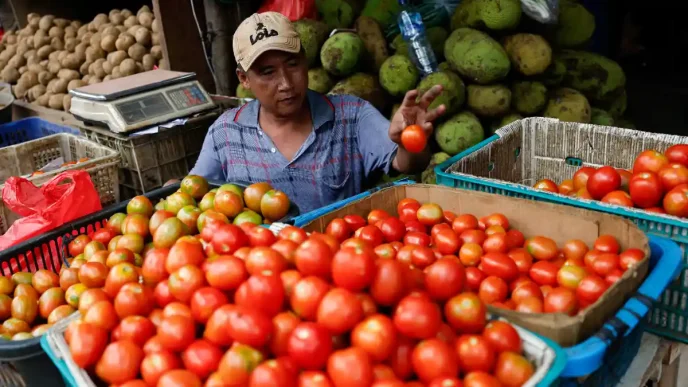On 24th June 2025, in an early morning surprise attack, the Cambodian army unleashed an assault on Thailand resulting in the death of military and civilians and destroying business, health infrastructure in the process. Cambodia’s flagrant disregard for international law and ASEAN harmony was on full-show in an act of war—and bloody—violence aimed directly at the people of Surin, not at military infrastructure and soldiers. Claims of freshly laid landmines led to violent clashes between Thailand and Cambodia near the Ta Moan Thom temple on June 24, 2025, which has all but shattered fragile hopes for cooperation over disputed land and sea borders.
The Overlapping Claims Area (OCA) in the Gulf of Thailand, a 27,000 square kilometer region believed to hold up to 11 trillion cubic feet of natural gas, has long been a flashpoint in bilateral relations. With at least 15 people killed in the latest conflict—predominantly civilians—and thousands displaced, nationalist sentiments have surged, casting a shadow over negotiations to jointly develop the energy-rich area. As both nations grapple with escalating tensions and economic pressures, the prospect of unlocking the OCA’s vast resources seems more distant than ever.
Roots of a Decades-Long Dispute
The origins of the Thailand-Cambodia OCA dispute trace back to colonial-era boundary demarcations, with disagreements over a 1907 French map that Cambodia uses to assert its claims, while Thailand contests its accuracy. This has led to overlapping territorial assertions in the Gulf of Thailand, a region known for significant oil and gas reserves. While areas along peninsular Thailand and into Malaysia have seen successful exploration, the central and eastern portions, including the OCA, remain untapped due to geopolitical deadlock.
Efforts to resolve the maritime dispute date back to a 2001 Memorandum of Understanding (MOU) between the two nations, which aimed to establish a framework for negotiation. However, progress stalled amid political tensions, particularly over land border issues such as the Preah Vihear temple. In 1962, the International Court of Justice (ICJ) awarded the temple to Cambodia, a decision that inflamed Thai nationalist sentiment and strained relations. A 2013 ICJ ruling further clarified that Thailand’s obligations were limited to withdrawing forces from the temple area, leaving adjacent land disputes unresolved. By 2009, the Thai Cabinet had scrapped the 2001 MOU, leaving the OCA’s development in limbo.
Historical clashes have only deepened mistrust. Between 2008 and 2011, violent encounters near Preah Vihear and Ta Moan Thom resulted in at least 34 deaths and displaced thousands, highlighting the role of nationalist fervor in derailing diplomacy. As both countries faced mounting energy needs in recent years, there was a brief window of hope in early 2023 when senior ministers agreed to advance negotiations over the OCA. Yet, the recent violence has reversed any tentative progress.
Energy Needs Fuel Urgency
For Thailand, the stakes in resolving the OCA dispute are tied to its energy security. Domestic natural gas production has declined sharply, falling from a peak of 4,073 million standard cubic feet per day (MMSCFD) in 2014 to 3,204 MMSCFD by the end of 2021, according to data from the Thai Energy Policy Office. With rising demand, the country has increasingly relied on imports, bringing in 1,512 MMSCFD in 2021, half of which came from Myanmar’s unstable supply. Thailand’s petrochemical industry, the largest in ASEAN, depends heavily on Gulf of Thailand feedstocks, and declining supplies have forced costly adjustments in operations.
Cambodia, on the other hand, remains entirely dependent on energy imports, with diesel fuel underpinning its power generation. Early ambitions to become an oil and gas producer in the 2000s faltered as major firms like Chevron and China National Offshore Oil Corporation withdrew from projects citing regulatory uncertainties. A government target for first oil production in 2012 passed without success, leaving Cambodia’s energy sector stagnant. The OCA represents a potential lifeline for both nations, but political and historical barriers have kept it out of reach.
Proposed Solutions and Persistent Challenges
Before the June 2025 conflict, Thailand and Cambodia explored revenue-sharing models to unlock the OCA’s potential. Cambodia proposed dividing the area into a checkerboard of at least 14 blocks, with revenues and management split equally. Thailand favored a model of three parallel zones running north to south, with the central zone’s revenues shared equally and outer zones weighted heavily in favor of the adjacent country. Industry experts have noted that most exploitable reserves likely lie closer to Thailand’s side, where geological formations extend from undisputed Thai waters, while Cambodia faces more challenging drilling conditions.
A Joint Development Area (JDA), modeled on Thailand’s successful arrangement with Malaysia, was seen as a viable solution to bypass sovereignty disputes while advancing exploration. However, political hurdles, including Cambodia’s claim over Koh Kood (Ko Hut) island based on an old (and possibly incorrectly surveyed) French map, have remained unresolved. Thailand’s advanced oil and gas industry also positions it to dominate any development, potentially sidelining Cambodia, which lacks domestic capacity.
Escalation of Violence in 2025
The outbreak of violence on June 24, 2025, near the Ta Moan Thom temple marked a dramatic escalation in tensions. With social media flooded with images dead and injured, and video of fearful children running for safety, it is easy to see how Thailand has accused Cambodia of initiating the conflict with rocket fire. In response, Thailand conducted airstrikes, intensifying the crisis to its deadliest level in over a decade.
The conflict was preceded by a skirmish in May 2025 that killed a Cambodian soldier, and followed by a leaked phone conversation between Thai Prime Minister Paetongtarn Shinawatra and former Cambodian Prime Minister Hun Sen. The call, in which Paetongtarn referred to Hun Sen as “uncle” and criticized Thai military leadership, sparked outrage in Thailand, leading to her suspension by the Constitutional Court on July 1, 2025. This political instability has further complicated efforts to de-escalate the situation.
Nationalist rhetoric has intensified on both sides. Hun Sen, now Cambodia’s Senate President, has been accused of stoking tensions, while Cambodia’s announcement of military conscription for 2026 signals a hardening stance. Thailand has closed border crossings, and Cambodia has banned Thai imports, including agricultural products, adding economic strain to the already fraught relationship.
Regional and International Responses
As of late July 2025, diplomatic efforts to resume OCA talks appear stalled. Thailand’s acting Prime Minister Phumtham Wechayachai has warned of the risk of full-scale war, while Cambodia has appealed to the UN Security Council, accusing Thailand of unprovoked attacks. Thailand, in turn, has rejected ICJ jurisdiction over the dispute. Calls for de-escalation from ASEAN and China have yielded little progress, with China’s potential role as a mediator complicated by its closer ties to Cambodia.
The OCA’s energy potential remains a tantalizing yet inaccessible prize. Thailand’s reliance on costly liquefied natural gas (LNG) imports and Cambodia’s dependence on diesel underscore the urgency of a resolution. However, the June 2025 conflict has deepened mistrust, making cooperation elusive. Historical grievances, amplified by nationalist fervor and political instability, continue to obstruct mutual economic gains.
A Fragile Path Forward
The Thailand-Cambodia dispute over the OCA is emblematic of how historical animosities and political volatility can thwart shared interests. With energy needs pressing and the human cost of conflict mounting, the need for dialogue is undeniable. Yet, as border crossings remain closed and military posturing intensifies, the question looms: can these two nations find a way to prioritize economic cooperation over nationalist pride, or will the OCA remain a symbol of unresolved tensions for years to come?

